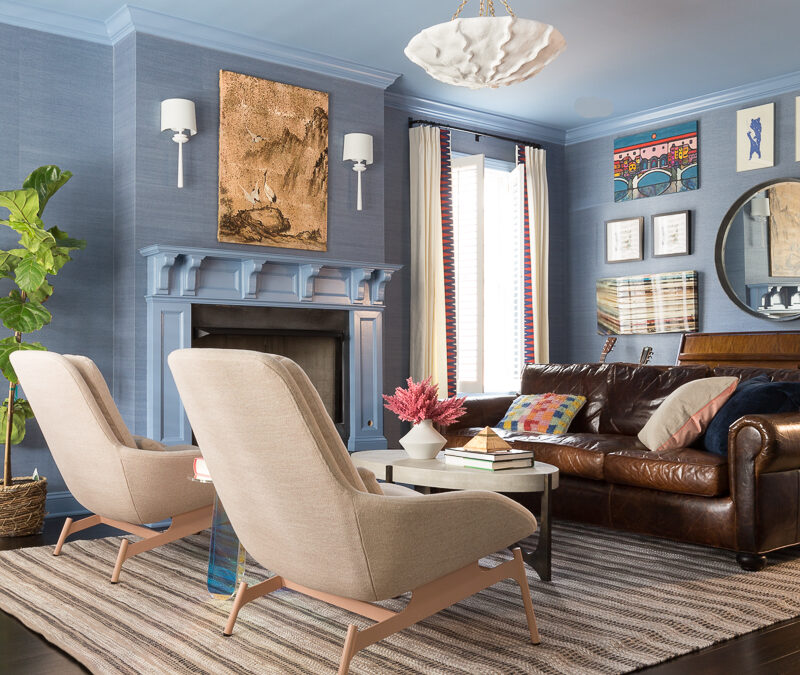Picking a proper rug for a space can be complicated, but here is a comprehensive rug guide explaining the pros and cons to each type. Solution Dyed Acrylic, Wool, Viscose, Nylon, Poly, Natural Fiber, Cotton….the list goes on! Let’s break it down so you make a wise investment for your home.
Note: Some of the the samples listed in this post were gifted by Annie Selke. I appreciate their support and together we are teaming up to bring you this helpful rug guide. The opinions are 100% my own
A rug is beautiful marriage of both form and function. Not only does it anchor a space and provide an opportunity for color, texture, and/or pattern, it is also a way to add softness and noise abatement to most rooms. A rug is often one of the larger investments in a design plan, so it is important to have a good understanding of the variety of substrates and materials so that you can make an informed purchase. This rug guide will help do just that.
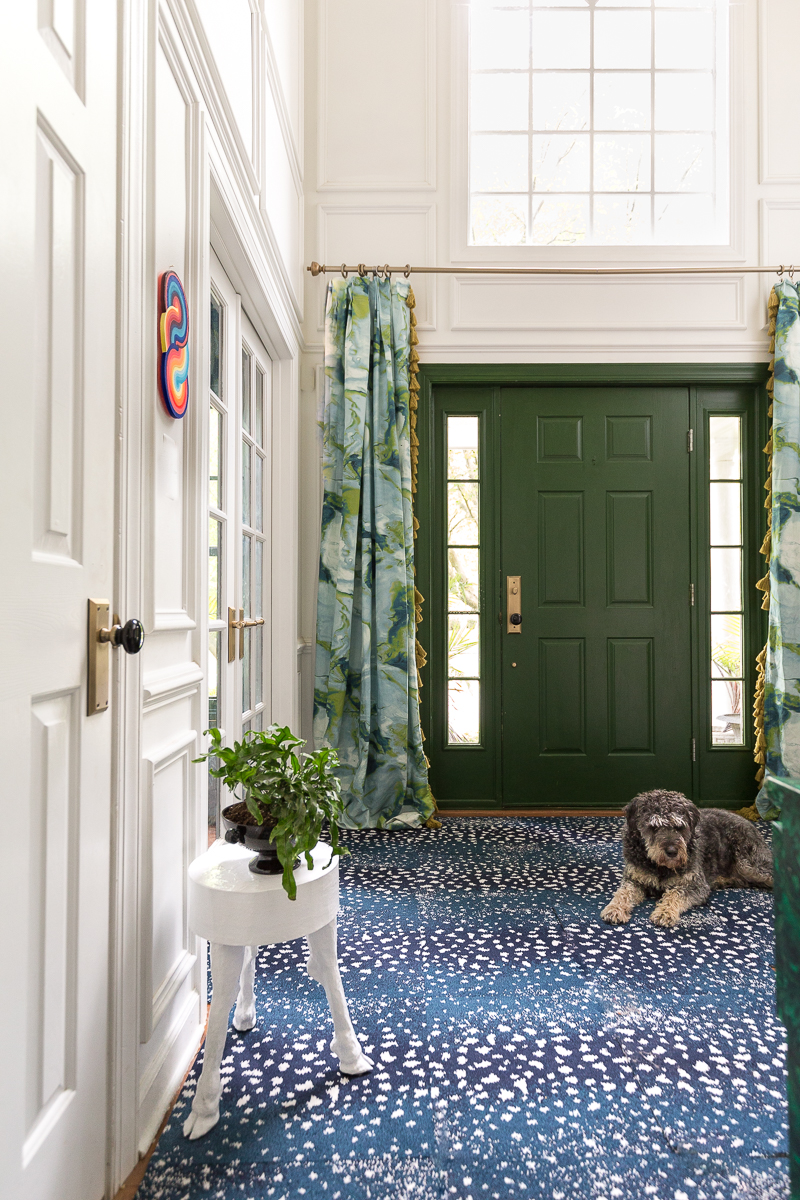
Rug Content
Solution Dyed Acrylic
PROS: Bleach Cleanable, great at stain resistance and wear, top of the line
CONS: Often a very large investment, limited designs
If I could have all bleach cleanable, solution dyed acrylic rugs in my home, I probably would. Solution dyed acrylic materials are fabricated with the dye in each strand, so bleach litterally can not strip the color away. I have done several sofas in solution dyed acrylic velvets, and they look almost like mohair. It truly is an amazing product.
For most budgets, however, this is a big of a splurge. A solution dyed acrylic area rug can easily run $7k-14K+. Plus, they are not often readily available on the market. There just aren’t as many options as you will find in the wool range.
Wool Rugs
PROS: Long wearing, cleanable, soft, large selection of designs
CONS: Often a larger investment, can fade, can shed
Wool is my personal gold standard. It comes in endless designs, wears well, and feels great under foot.
If, heaven forbid, your dog has an accident, there is a better chance that it might come out with proper treatment than with some other rug types, viscose and some natural fiber rugs for example. It looks and feels high-end and, baring some unforeseen accident, should look great for years to come.

This Malta Blue Wool Rug, above, has a tight LOOP construction.
Compare that to the Masinissa Hand knotted wool rug, below, which has a CUT construction. Both of these options are acceptable for high traffic areas.
If you have pets, especially cats, then you will want to watch out for rugs with LARGE loops, as they can catch their nails in the loops and causes snags.

Another thing to keep in mind is the process by which the rug is made. The term hand knotted refers to the process of someone literally using a loom and their own two hands. This is a tedious process and naturally will cost more money than a hand tufted rug. In this process, someone uses their hands and a gun-like machine to tuft out the framework of the rug. Both are lovely options, but hand knotted is king.
Many rugs are machine made, which can also be good quality, but given the option, hand tufted and knotted are generally better quality and more expensive.
PET Rugs
PROS: Good for the environment, easy to clean, inexpensive, resists stains and fading
CONS: Generally not as soft, thick, or plush as wool…though I have seen some really great options these days.
This polyester product, made from recycled bottles, is quickly becoming one of my favorite types of rugs for high traffic/kid/pet areas. It is easy to treat stains and is a good option for outdoor and increasingly indoor spaces. I have seen a few convincing rugs that can almost pass for natural fiber or wool.
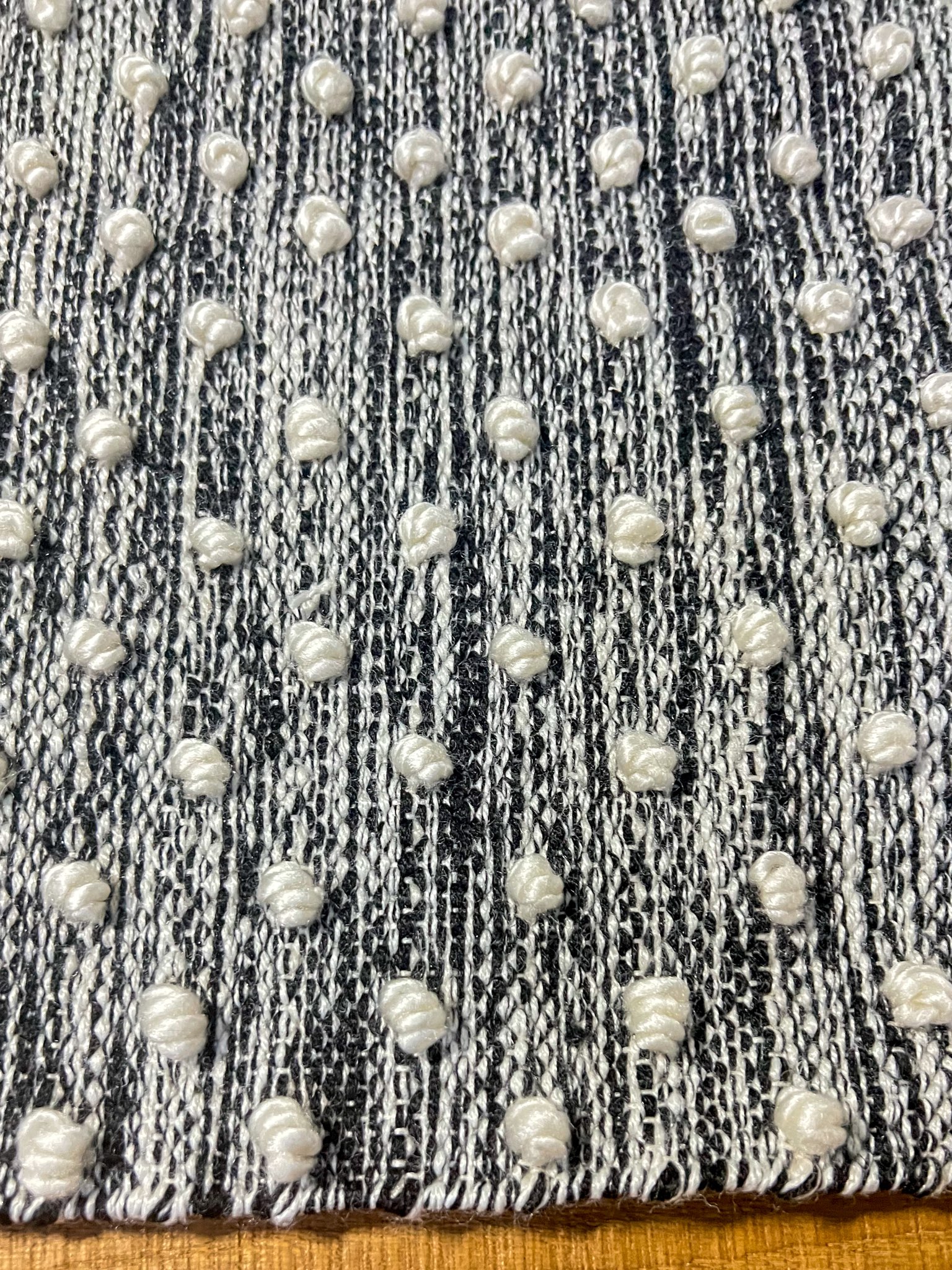
This Hobnail Black Hand Woven PET rug is great outdoors or high traffic areas inside. It is scrubbable, fade and stain resistent, and pretty soft.
Nylon Rugs
PROS: Hardwearing, stain and crush resistant, easy to maintain, less expensive than wool
CONS: Generally not QUITE as soft/plush as wool and more expensive than some other carpets.
If you can’t afford wool, nylon is a great alternative. It doesn’t crush like poly pile and wears well, though not as long as wool. This is a good choice for high traffic areas. I’ve seen some really lovely nylon blends as well.

This Pandora Sky rug is 58% Poly and 42% Nylon. It will be stain resistant and should wear relatively well because it doesn’t have much loft. I’m considering it for my dining room because it is gorgeous, has a beautiful color range and hand. It should be easy to clean if anyone spills.
Polypropylene Fiber Rugs
PROS: Less expensive than wool, stain resistant, and soft, great for outdoor rugs, light bleach cleaning
CONS: Not as soft and lush as wool. Feels more like an indoor outdoor rug.
Anyone that has ever worn polyester clothing knows that it is stain resistant and hardwearing, but not as luxurious as some other fabric choices like wool or silk. The same goes with polypropylene rugs. They still have an important role in the rug market. They are generally less expensive and can clean up really well. They are a great choice for patios.

This Diamond Black/Ivory rug is a Polypropylene UV rug that would work really well outdoors, but could also be brought indoors in high traffic scenarios.
Natural Fiber Rugs
PROS: Aesthetically beautiful and a beautiful way to add texture, lovely for layering, often less expensive than wool rugs
CONS: Not as easy to clean as wool, sometimes sheds, sometimes scratchy (depending on WHICH natural fiber)

If you need to add texture to a space, natural fiber is a stunning option. While it feels at home in a beachy vibe, it can be used in most any aesthetic. I have had natural fiber rugs last for many years, even through dog accidents. However, from my professional opinion, it technically doesn’t clean as well as wool and is safest to put in lower stain/dirt areas.
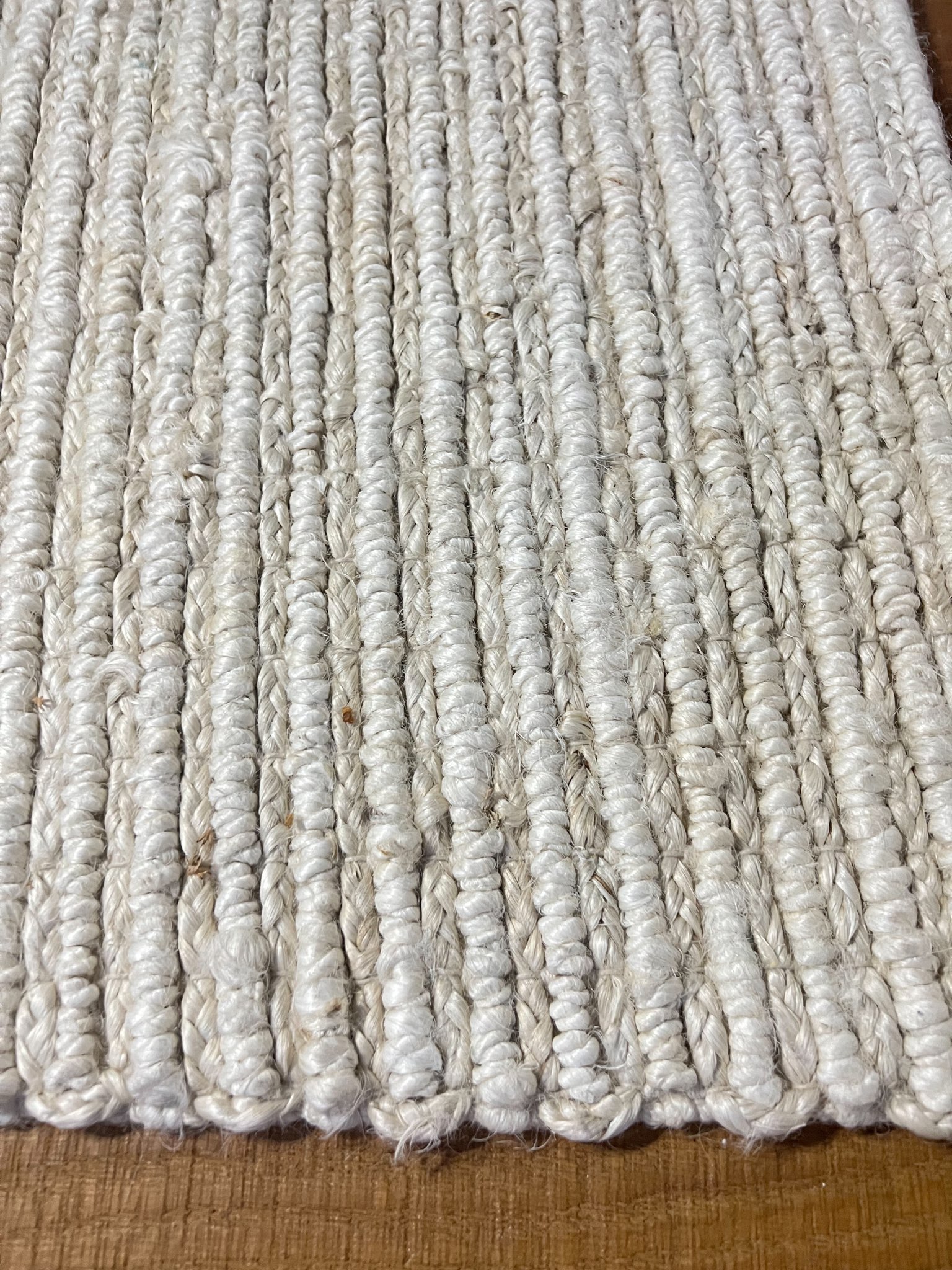
This Dunes Bleached Oak is GORGEOUS and especially good for lower traffic rooms without cute, dirty, animals with claws :).
Natural Fiber Blend Rugs
Obviously a blend of any two carpet materials will have characteristics of both. Some people may want the look of natural fiber rugs but the softness of wool or cotton. In this scenarios, a natural fiber blend rug could be the best of both worlds.

I have used this Pebble Natural Handwoven PET UV rug once for a client and it was lovely. The PET adds softness and should theoretically, make it a bit more stain resistant.
Cotton Rugs

Pros: inexpensive, cute, a variety of designs
CONS: Harder to get clean than wool (though better than viscose). Consider spray treating. Works best with a nice thick rug pad.
If you need a fun option to finish off a space on a budget, cotton might be a good way to go. Just keep in mind that investing in wool might work out better long term. Smaller cotton rugs can be especially nice if you can throw it in the washer.
Silk Rugs
PROS: Stunning with a light sheen
CONS: Expensive, hard to clean, stain treatment recommended, a BIG investment
Sure, silk is absolutely gorgeous. Nobody can argue that. If however, you opt to invest in a silk rug, maybe aim for rooms with less traffic and spills. Additionally perhaps pick a pattern that will hide any potential stains.
I recently used a recycled silk rug in a lux dining room. It looks spectacular and came with a factory stain treatment.
Washable Rugs
PROS: Easy to clean
CONS: Not as plush as wool
Sometimes you just need a rug that you can wash! I’ve been through phases of life with pets and young kids where function beat-out form. If you can relate to this, then this rug style might be for you. I have not used washable rugs in any client projects, but I have in my own back yard. so I can only speak from limited experience on this one, but I think the emerging technology is improving. Some brands use a velcro-like system. I’ve heard they are sometimes tricky to get back on, but might be worth the effort if you can live with less stress.
Annie Selke has some of their more popular styles in washable rugs now up to 8’x10′ rugs and it is a worry free way to add a punch of color.
One thing to consider is the size of your washing machine. Do some research on each brand to see what sizes fit in your unit, or consider using a hose and soap if needed.

Animal Hides
PROS: Reasonably priced, great for styling awkward spaces
CONS: Eventually the hairs fall out of hide on high traffic areas. I have a cowhide from 9 years ago and it is just now starting to show some bald spots.
I often use cowhides, or cowhide alternatives, in client spaces as a way to fill an entryway, or leave a gorgeous floor slightly exposed. They are inexpensive and hard wearing. If creases bother you, look for rug companies that don’t store the rugs folded. They can be ironed out to some degree, but might always show a little crease.
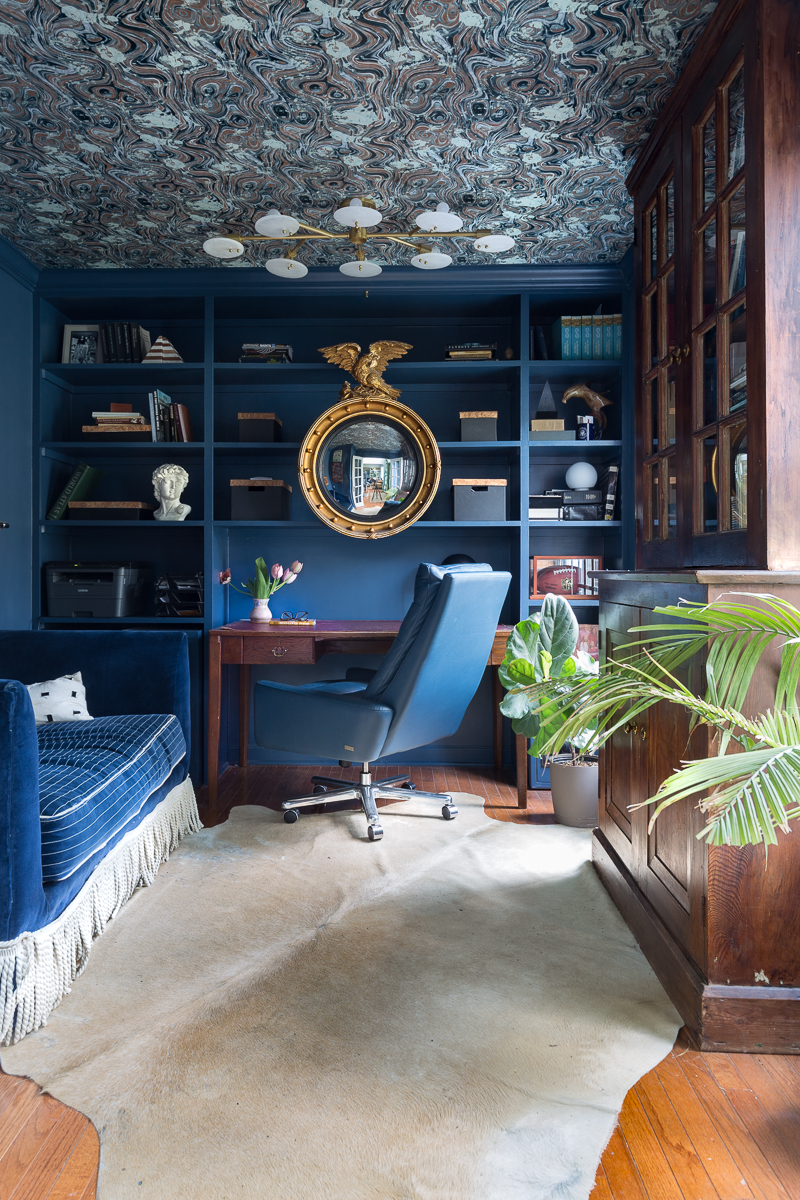
Viscose
PROS: Inexpensive and often a beautiful sheen
CONS: Can’t handle water,
hard to clean, only acceptable in low traffic areas like a bedroom, fibers flattened by heavy furniture
Viscose can be lovely to look at because it often has a lovely shine and soft hand, but in my professional opinion, I would only consider using this rug material in a guest bedroom or another very low traffic space. The reason being, it can not, and I mean CAN NOT, be cleaned easily. Some carpet cleaning companies will tell their clients to just throw away their damaged viscose rugs because it it will not ever come out clean. Keep in mind that viscose comes in a variety of other names, including bamboo silk. If you shop for rugs at places like Homegoods, be especially weary. I find that many of their rugs are made of viscose.
Having said that, if you just need a less expensive option and you don’t plan to keep this forever, then go ahead and buy a viscose rug…just don’t get too terribly attached.
Sometimes viscose is blended with other fibers to add highlights and sheen. If it is only 10 or 20% viscose, this might be ok in some rooms. I once ordered a HUGE custom hand knotted wool rug with viscose highlights for a client. It was undeniably gorgeous.
RUG GUIDE ROUND UP
Depending on your budget and lifestyle, different types of rugs will work well in different room.
Don’t forget some additional general tips:
1. Light rugs get dirty faster than dark rugs. If you have a light rug, make sure it is made from a material that can be washed, or it was so inexpensive that you are ok with it being temporary.
2. A pattern can help hide stains.
3. Bonus points if your rug is reversible. I find hand knotted rugs to be just as pretty, if not prettier, on the backside.
4. If given the option to pick a piled wool, nylon, or poly on stairs, go with wool. If not, nylon is a better long term option than a high pile poly as poly will eventually matte on stairs sooner.
Thanks for joining me on the rug guide. I hope it helps demystify your next rug investment and gives you the confidence to make a good purchase.
Any questions about this rug guide? Please leave comments below.

